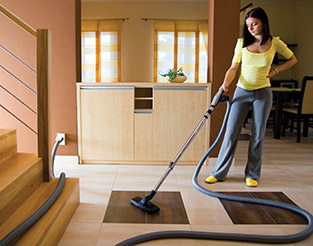
Air Performance for Central Vacuum Cleaners
A proposed new ASTM International standard will provide a laboratory conditions test for determining the sustained air performance and exhaust emissions of a central vacuum cleaner. WK14392, Test Method for Evaluating the Sustained Air Performance and Exhaust Emissions of Central Vacuum Cleaning Units, is being developed by Subcommittee F11.22 on Air Performance, part of ASTM International Committee F11 on Vacuum Cleaners,
"One of the advantages central vacuums have over portable vacuums is sustained air performance, that is, their ability to maintain a high level of performance over a long period of time without maintenance being performed," says Darrell Nieschwitz, engineering manager, H-P Products Inc., and an F11 member. "Central vacuums typically have much larger, more powerful motors and a larger dirt capacity."
Nieschwitz notes that WK14392 will test how vacuum performance will be affected after multiple vacuuming events over an extended period of time. The proposed standard will be used by central vacuum manufacturers to ensure that their products can be rated for consumers to select a product that meets their needs and price point.
"WK14392 will primarily be used by manufacturers to help determine how well their products perform over time, help identify areas in which they may be able to improve their designs and provide sensible advertising claims based on an industry test," says Nieschwitz.
All interested parties are welcome to participate in the development of WK14392 and other Committee F11 standards. The subcommittee maintains four air performance standards and is also developing WK18687, Test Method for Evaluating Air Performance Characteristics of Battery Powered Vacuum Cleaners.
CONTACT Technical Information: Darrell Nieschwitz, H-P Products Inc. • Louisville, Ohio • Phone: 330-875-5556, ext. 2272 | ASTM Staff: Diane Trinsey • Phone: 610-832-9661 | Upcoming Meeting: May 5-7 • May Committee Week • Toronto, Ontario, Canada
 SN Home
SN Home Archive
Archive Advertisers
Advertisers Masthead
Masthead RateCard
RateCard Subscribe
Subscribe Email Editor
Email Editor